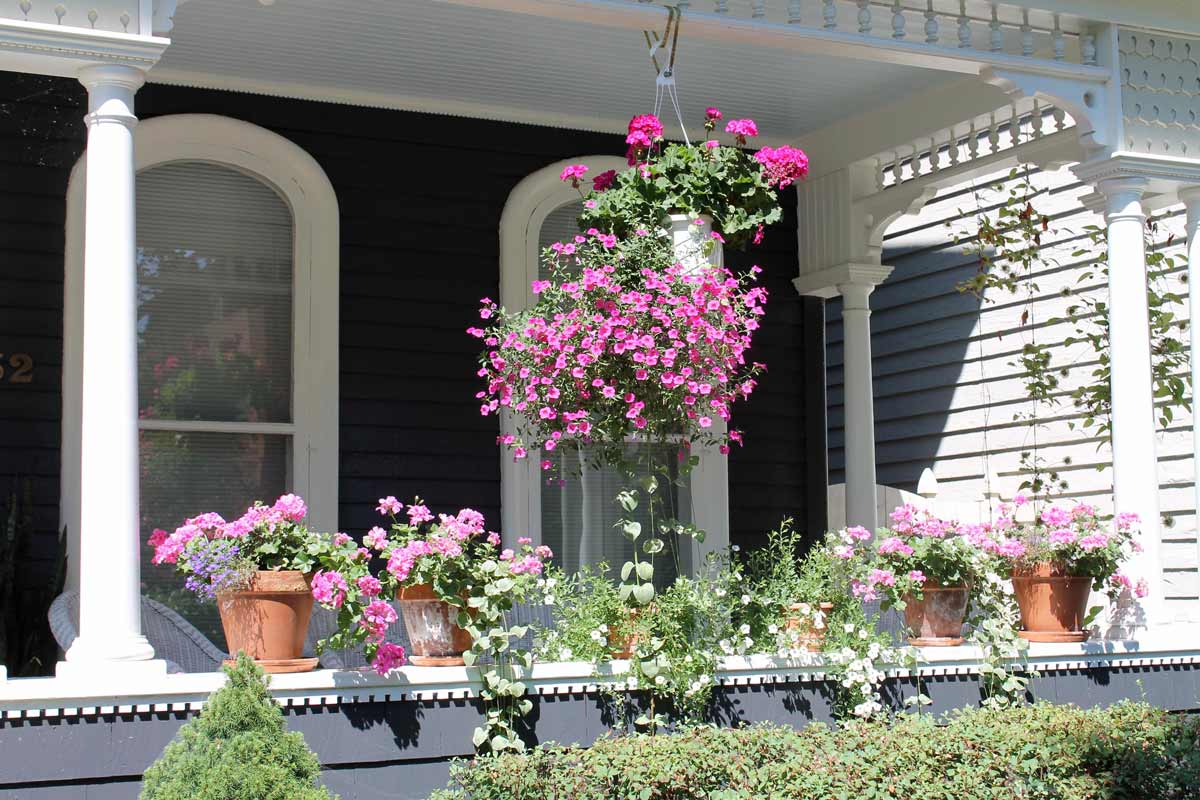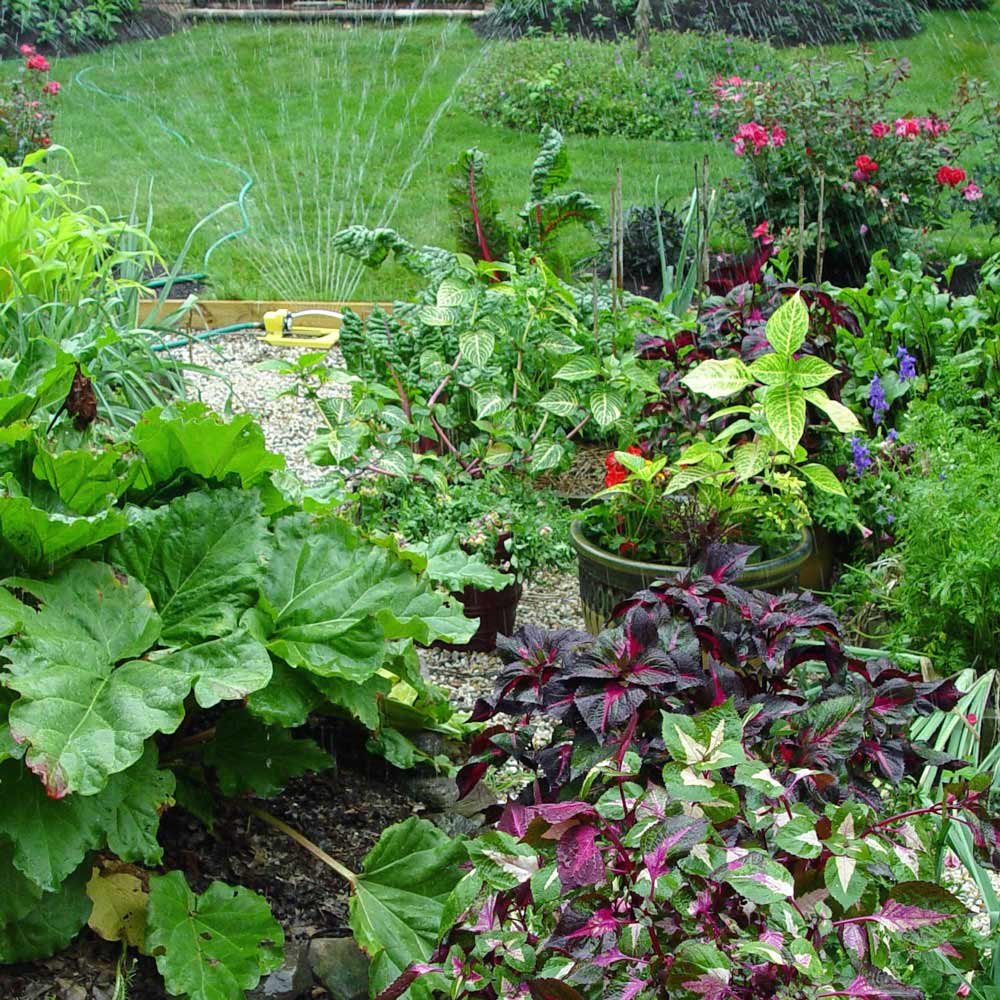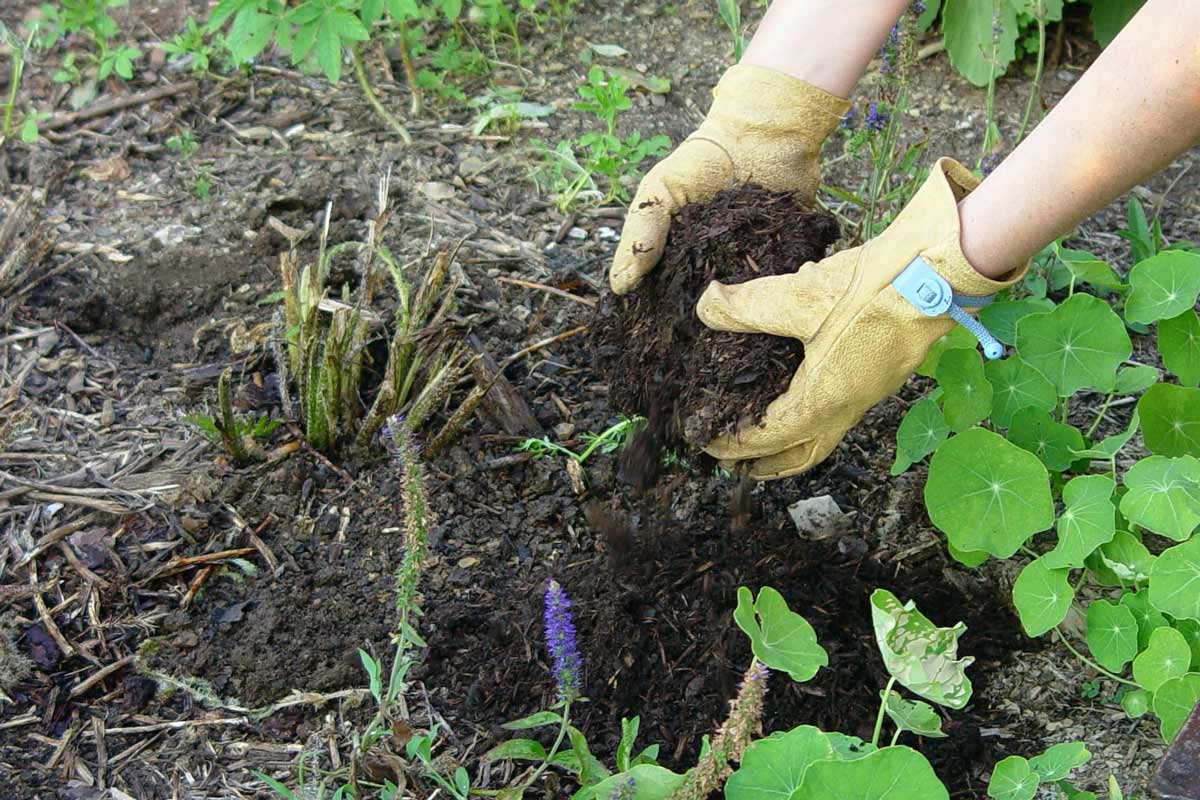Vacation: Putting Your Garden on Autopilot
While you’re enjoying that well-deserved summer vacation, your garden will be home working hard. Here are some simple tips to prepare your garden for your departure.
Trees, shrubs, perennials and most of the “permanent landscape” are fine when gardeners go away for a week or two of summer vacation.
Potted plants and hanging baskets are more of a concern. These can wilt after just a day or two without water, especially in a hot, sunny spot and especially when recently planted.
And although new summer annual flowers and veggies can go three or four days without rain or watering, they also can begin to suffer beyond that.
If you’re heading out on a trip this summer, here are eight tips to keep everything

Pots and hanging baskets can dry out in a day and so are most at risk when the hose-handling gardener goes on vacation. Photo by George Weigel
Can you recruit a neighbor or nearby teen to give your pots and annuals a drink as needed? Think of the investment as a plant form of pet-sitting.
If plant-sitting is out, group your pots and baskets together and place them on the ground in a shady spot out of the wind to minimize evaporation.
Give everything a good soaking before you leave, and you should be good for three or four days – more if it rains.

These potted plants are grouped together in a vegetable garden so one sprinkler – connected to an automatic timer – can water them all. Photo by George Weigel.
If you’ll be gone more than a few days, group the pots in an area where you can rig up a lawn sprinkler to douse them.
Connect the sprinkler to an automatic timer to have the plants watered every morning or two for 15 to 20 minutes.
Systems are available that let you control watering remotely with a cell-phone app.
If leaving the faucet on makes you nervous, set the grouped pots in a kiddie swimming pool or similar large container.
Sit the plants on old towels or blankets and fill the container with two or three inches of water.
The plant roots will soak up water through the pots’ drainage holes as needed. Two or three inches of water should buy you a week.
The only risk is if a rain deluge occurs, the pool will fill enough to rot the roots. Set the container under a covering if that’s a concern.
Another way to water gradually and as needed is by wicking water to them.
Fill a bucket or large container with water, then run fabric rope or rolled-up towels from the water source to the soil in the pot, ideally pushing the rope or towel to the bottom of the pot.
As the soil dries, it’ll draw moisture from the container.
An advantage of pots is that most are mobile enough to go inside while you’re away.
They’ll lose less moisture to evaporation there, plus the lower light will slow growth and water demands.
A few caveats: 1.) Give the plants a good soaking before you leave; 2.) Place saucers underneath the pots to catch any lingering drainage (your outdoor pots should have drainage holes), and 3.) Hose off or spray plants before taking them inside so bugs don’t hitch a ride.

A layer of mulch slows soil evaporation and holds down weeds as well. Photo by George Weigel
An inch or two of mulch over the ground slows evaporation, so if you don’t already have that, add it before leaving. Soak gardens before leaving, too, and hold off growth-encouraging fertilizer until you get back.
Even if the lawn goes dry and brown while you’re gone, it’ll recover as soon as it rains or is irrigated.
Existing lawns can easily survive four weeks without moisture even after they’ve gone brown in summer.
The exception is a new lawn. Young grass plants can die within a matter of a few days without water because of their under-developed roots. Sprinklers attached to automatic timers are an option there.
If you take regular summer vacations, some planning ahead can help in the future.
One way is to go with big pots. They don’t dry out as fast as smaller ones.
Also use thick, well insulated pots, such as foam or heavy concrete, which limit evaporation.
Plastic pots conserve moisture better than clay or terra cotta ones, which can be made more water-holding by lining the inside with a sheet of plastic. Ditto for hanging baskets.
Or invest in self-watering pots, which come with built-in reservoirs that let plant roots soak up stored water as needed.
Finally, pick annuals that are the most drought-tolerant, such as vinca, salvia, and wax begonias, instead of ones that wilt quickly when it gets dry, such as impatiens, lobelia, and fuchsia.